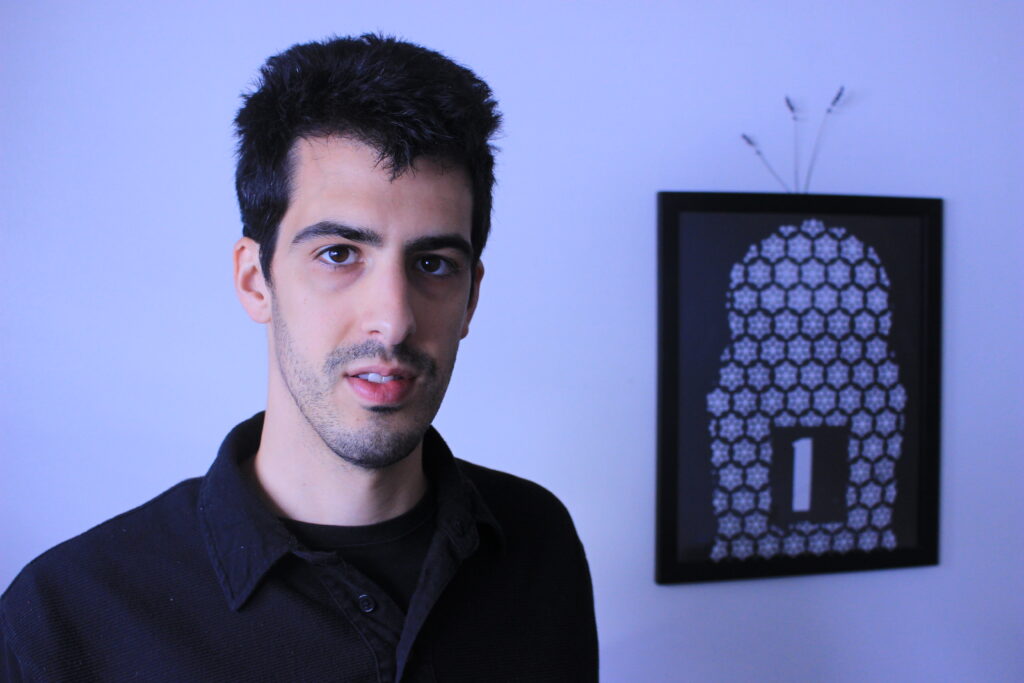Learning Goals
In this lesson, students will use Internet search results to generate random language for the basis of a poem, story, or essay. Students may use search engines on their devices, a classroom computer, or, if a more analog strategy is desired, any nearby books that are available. In the searching portion of the exercise, each student should select at least three sentences or phrases to serve as inspiration for their writing.
Students’ chosen search results do not have to appear in their final piece. Results can change and inform the writing process in many ways. For example, search results may form the structure for a poem. The voice of a random webpage may provide an unusual atmosphere for students to expand, detail, and polish in a story. Whatever their process, students should focus on developing meaning from chance bits of language. The random element of the exercise aims to alter existing habits and predictable patterns in the students’ writing and supports deviation from typical routes. This exercise champions the diversity and flexibility of language to empower students as they create meaning from what, at first glance, may have seemed void of meaning.
LESSON PLAN
Introduction and Discussion
Read the quote by Michelangelo: “Every block of stone has a statue inside it and it is the task of the sculptor to discover it.” Open a discussion to allow for students’ interpretations of Michelangelo’s words, then place the quote in the context of the exercise, with the students’ search terms representing the stone, and the resulting piece of writing the statue. In this way, the search results provide a beginning structure, which the students will then sculpt into something more personal.
Students should recognize that all they wish to convey through writing already exists, they must then perform the work required to shape its distinct form. To establish an aim is to commit to the work required to chisel it into something more. Conceptualize the writing process as twofold: dreaming and doing, vision and action, stone and statue. The searching portion of the exercise represents vision, while the writing portion represents action. A piece of writing cannot exist with an absence of either.
Searching
While some students may be capable of generating completely random phrases to use as search terms, others may require assistance. Phrases can come from any link that results from their searching (message boards, speeches, product reviews, articles, videos, etc.). All language sources are eligible. Offer a few example formulas for their searches, but remind the class that no approach is incorrect. Students are free to devise their own methods.
Prompt A: Search for one word that reminds you of home and one word from the last song you remember hearing. Navigate to the third page of the search engine’s results, scroll halfway down the page, and explore the links.
Prompt B: Search for the name of the street you grew up on combined with what you ate for breakfast and the habitat of the animal you fear most.
Prompt C: Find a book with a primary color on the cover design, jacket, or spine. Flip to a page numbered between 16 and 58. Find a word that begins with the letter c, one that begins with h, and one that begins with r. Plug the three words into a search engine, and select your phrases from the final page of results.
Prompt D: Open a book and flip to a random page. Find the word with the largest syllable count. Flip to another page and select any verb. On another page, locate three words that evoke sensual or emotional moods. Repeat this method three times with different books to generate phrases.
Encourage students to center their attention on words and phrases that seem foreign to their own creative palette. The searching portion of the exercise is as much about identifying a voice or tone that is different from their own and attempting to honor it as it is about implementing novel vocabulary. The atmosphere should be light and fun. Do what you can to foster an attitude of play in the classroom. Using the prompts, or your own ideas, perform a few example searches to share with everyone.
Writing
Once students have performed their searches and found their phrases or sentences, begin the writing portion of the lesson. Instruct students to write their selected phrases at the top of their document. Remind students that they do not have to use their search results directly, but they are free to do so if they like. Allow for fifteen minutes (or more) of silent, uninterrupted writing.
Reflection and Discussion
Offer students the option to share their work aloud. Encourage those who read to illuminate the process they used in the searching portion of the exercise. Ask them to explain why they chose their phrases, and how they intended to incorporate them into their writing. Did they succeed? Did the search results appear in the piece, or did they merely serve as inspiration? Was their objective one of tone, vocabulary, or narrative?
Closing discussion questions:
- Did you notice any themes or patterns emerge in the searching portion of the exercise?
- Can you think of other methods you might use to fuel your imagination?
- Did any of your search terms inspire you to write in a new, unexpected way, or to consider an alternative voice?
- What challenges did you face in creating meaning from nonsense?

Top Photo: The Seattle Times
Cal LaFountain has worked at a public library in Vermont, a medical library in Michigan, and an educational library in Pennsylvania. His projects have been presented by the Electronic Literature Organization and Information Today, among others. He resides in Pittsburgh where he writes sentences, plants trees, and records sounds.

